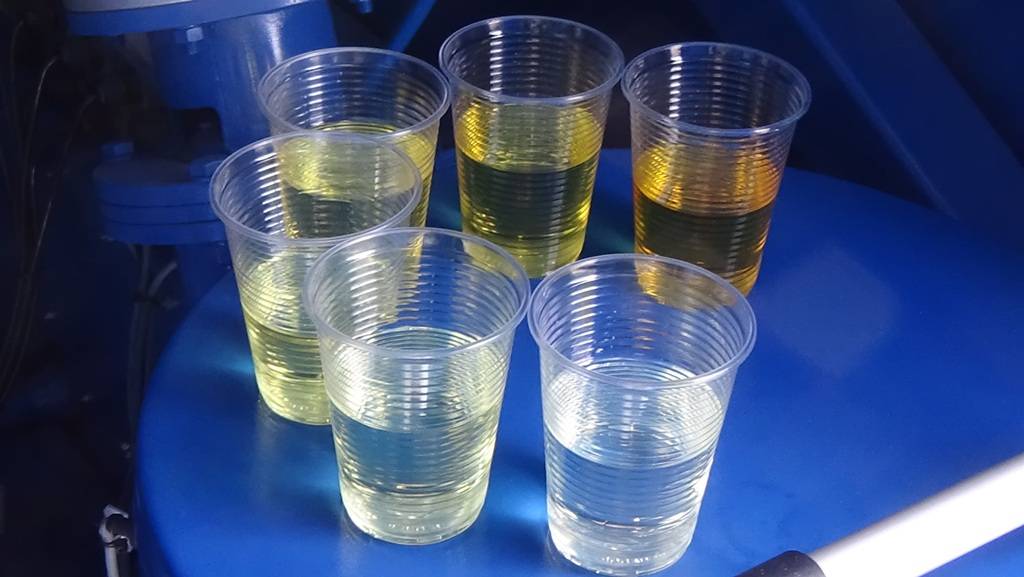Transformers are one of the main components of the complex equipment of many energy (power plants, substations, converter devices) or industrial enterprises.
This equipment, depending on type and capabilities, can be operated in a wide range of conditions with varying load. Since transformers are an efficient energy transformation mechanism, it is important to maintain them correctly to preserve reliability throughout their lifetime, to avoid costly damage and repairs. However, even with regular checks, it may be difficult to prevent random failures.
About 80% of all failures of power transformers are caused by contamination and oxidation of transformer oil, the liquid insulation component of the transformer. Let us consider some of the typical failures and their cause, i.e. the influence of old transformer oil.
The most common failure is the malfunction of oil filled bushings with the entry of water. Oil is moisturized, its dielectric properties degrade and partial discharges and a breakthrough are the results.
Another common failure is the failure of the load tap changer. This is caused by incorrect setup of the contacts and the formation of oxidized film on them, which is the product of oil oxidation.
Some of the most severe malfunctions are the failures of solid insulation and windings. Sludge and sediment are deposited on the windings and insulation, weakening it and causing discharges and a breakthrough.
Another point to consider is that there is a reverse effect: damage and malfunction of some components also damage the oil. For instance, oil pump malfunction may contaminate the oil with metal particles etc. If rubber gaskets are damaged, water may enter the oil, which is one of the main factors of oil aging. Malfunction of oil level indicator may cause the oil to drop below the minimum or exceed the maximum level. These are but a few of the potential problems.
To detect problems with the insulation fluid and calculate the probability of failure, transformer oil must be tested.
The limits of physical and chemical properties, including the dielectric strength of the oil, new or used, are regulated.
Sampling of oil used in transformer tanks is performed once every one to three years depending on the load and power of the transformer.
For accurate results of oil testing or analysis, water, dirt or any other contaminant may not enter the oil sample. The sampling tap and the sampling vessel must be carefully cleaned. Prevent condensation on the walls of the sampling vessel by avoiding sharp temperature change. Open the vessel only after it has the same temperature as the environment.
The main oil parameters are tested. These include dielectric strength, color, gas, water particulate matter, additives, acid and alkali content, gas chromatography, etc.
An important oil parameter is the flashpoint. The lower the flashpoint, the higher the volatility of oil. Evaporation degrades oil quality, increases its viscosity and the content of explosive gases.
To measure the flashpoint, the oil is put into a closed vessel and heated. The vapor mixes with air and ignites on contact with flame or an electric spark. Flashpoint temperature and analysis of the accumulated gases may indicate the nature of internal damage to the transformer quite accurately.
The opposite parameter, the oil filter point, is measured for oil used in colder temperatures. This parameter influences operation of pumps, switches, filters etc.
Acidity of the oil is the amount of potassium hydroxide in milligrams required to neutralize free acid in one gram of oil. This is an indication of the oil’s aging.
Oil stability is tested by artificial oxidation of the oil. The final indications: percentage of sludge and acidity, are calculated for new oil only.
Other oil tests are auxiliary. Those parameters are not regulated. Those are density, static and dynamic viscosity. Sulfur content is only tested in transformer oil production process.
The results of the tests and measurements offer a good estimate of the oil’s condition and performance. Purification or regeneration measures may be planned based on this data as well.

